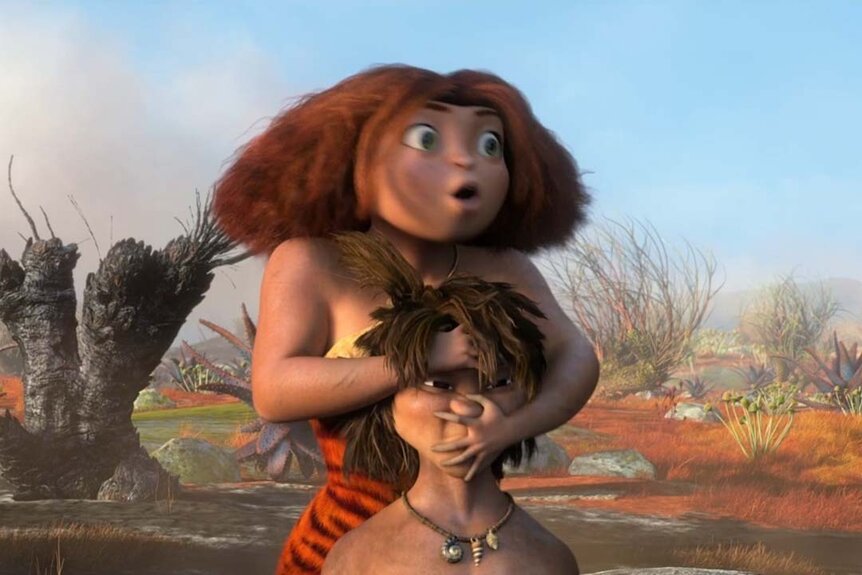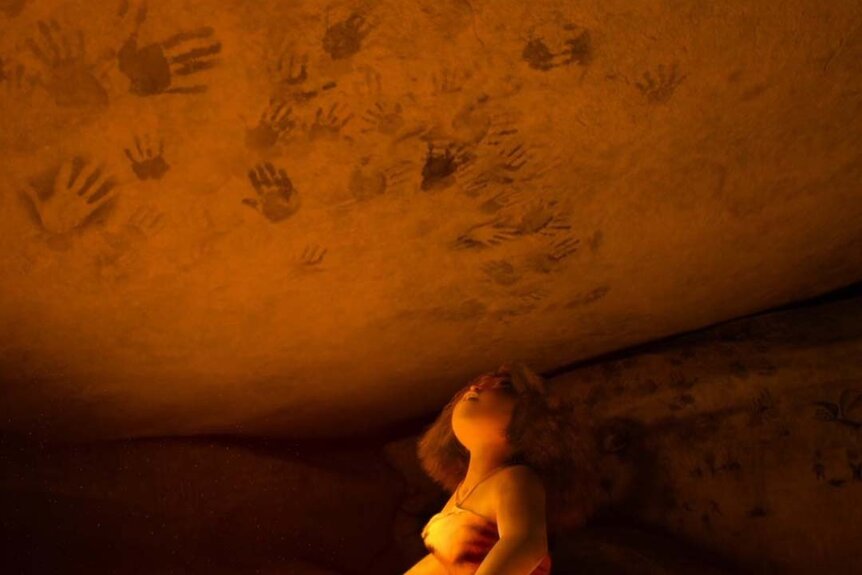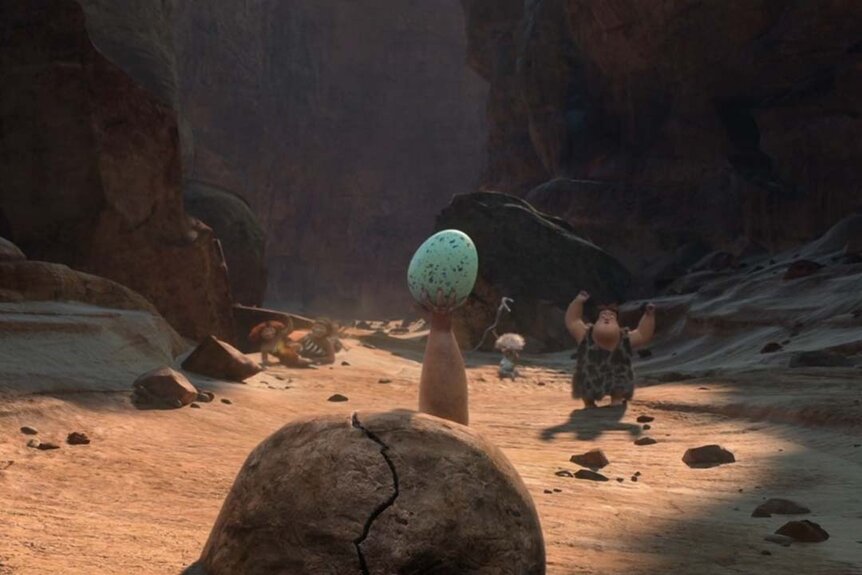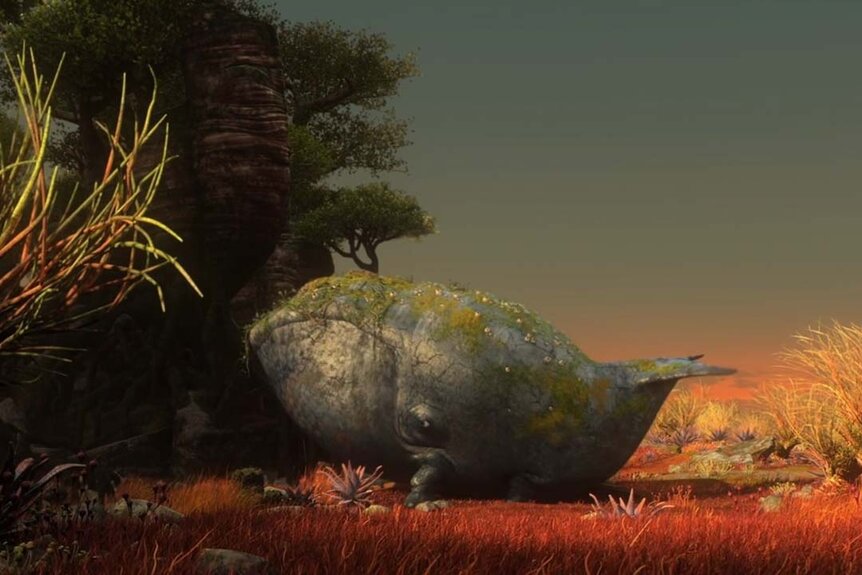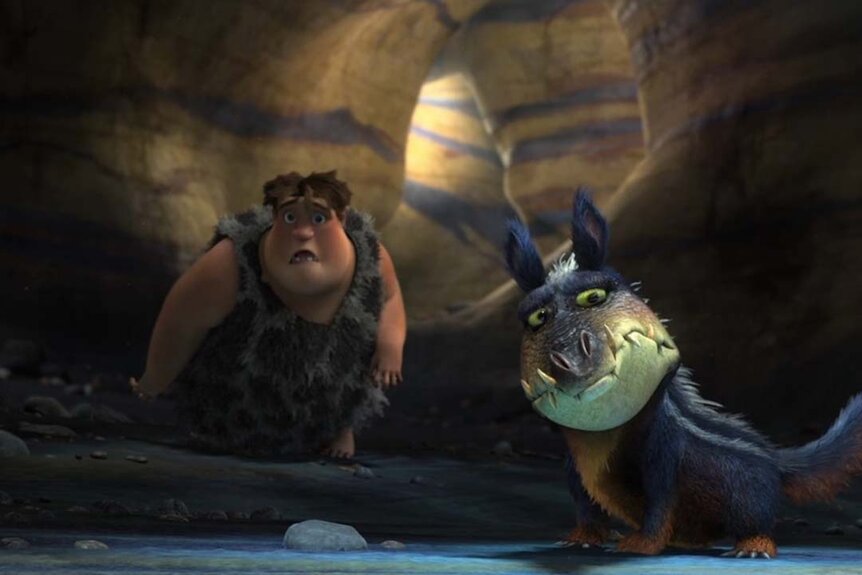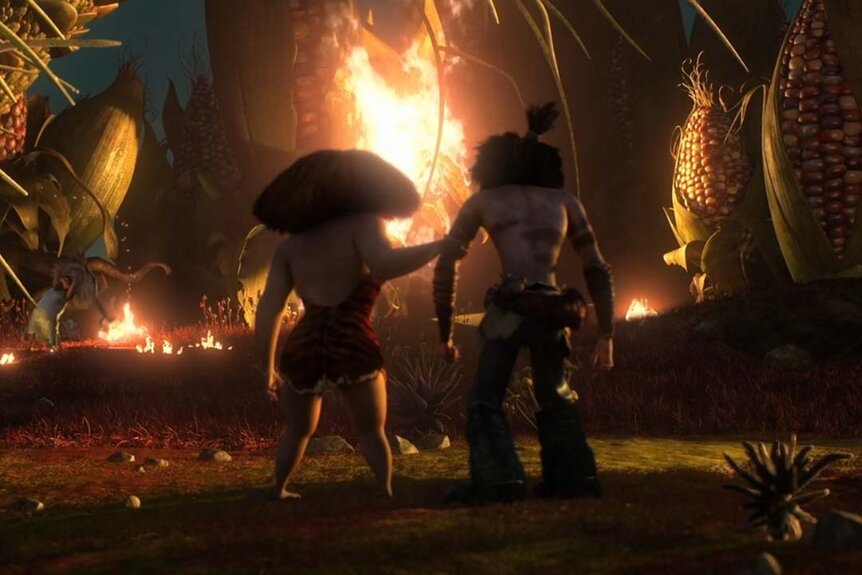Create a free profile to get unlimited access to exclusive videos, sweepstakes, and more!
Surprising Things The Croods Got Right About Ancient Human History
Even the wrong stuff has hints of truth.
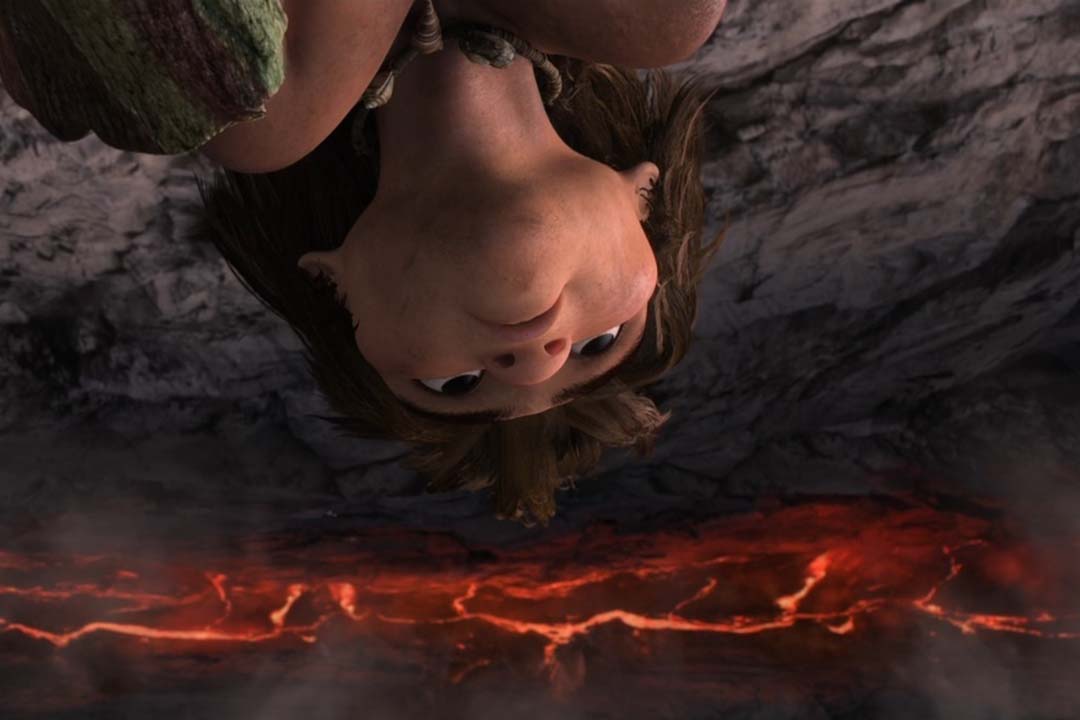
The Croods (streaming now on Peacock!) is a timeless tale — both literally and figuratively — which takes place in the fictional time period of the Croodaceous. The world is filled with a wild menagerie of mashups; animals like owl-cats, parrot-tigers, piranha-birds, and flower-headed-frogs abound. While it’s clear that the Croods and their contemporaries don’t exist in the history of our own world, there are enough similarities to draw some comparisons.
The Croods doesn’t attempt to mirror reality, so we won’t fault them for their missteps, but we will give them credit for the surprising number of things they got right!
Homo sapiens and Neanderthals Interacted… and Interbred
Much of the story’s conflict hinges on Eep’s (Emma Stone) growing relationship with Guy, a nomadic Homo sapiens portrayed by Ryan Reynolds. The Croods and Guy have both lost everyone they’ve ever known to a combination of mishaps and natural disasters. The world is changing and the only way to survive is to move. In the real world, similar climate shifts pushed disparate groups of Homo sapiens, Neanderthals, and Denisovans into close proximity with one another. And any time people (even people from different human subspecies) get together, they inevitably hook up.
RELATED: Turns Out Human DNA Isn’t Really That Human After All
Neanderthals first show up in the fossil record roughly 430,000 years ago, but most of what we know about them comes from between 130,000 years ago and 40,000 years ago, when they disappeared. They are our closest extinct relatives and the more we learn, the more we realize they weren’t all that different from us.
Neanderthals split off from their common ancestor with Homo sapiens after leaving Africa and evolved as they spread across Europe and Asia. They seem to have enjoyed warm climates but were perfectly happy to survive and thrive in cold environments as well. Several Neanderthal sites have been found inside of cave systems, leading to their common moniker: the cave man. However, early Homo sapiens also favored caves for their protection.
Far from the simple-minded cave people often portrayed in our stories, they were a complex people with culture and intelligence. They crafted stone tools and specialized in hunting ice age megafauna. As the climate shifted, some of those species died out, making resources scarce. Homo sapiens moved into the area after tens of thousands of years of Neanderthal occupation and likely outcompeted them for dwindling resources. Not all Neanderthals vanished, though. We know some of them incorporated themselves into Homo sapiens groups through interbreeding. Today, a good chunk of the human population has between 1% and 4% Neanderthal DNA.
Neanderthal Cave Paintings
We often think of our species as being unique in the history of our planet, the only creatures to have invented art. But that isn’t true by a long shot, and it certainly isn’t true of Neanderthals. While Homo sapiens can probably take credit for the lion’s share of the world’s art, we don’t have a corner on the creative market.
The oldest known cave paintings in the world come from a cave in Europe, and were painted by Neanderthals, according to a study published in the journal Nature. If the dating is correct, those paintings predate the arrival of modern humans by something like 20,000 years.
RELATED: 86,000-Year-Old Human Remains Rewrite History of Human Expansion
Moreover, the paintings bear a striking resemblance to the red hand paintings Grug makes in the movie. The only difference is they are painted in reverse. Instead of placing pigment on the hand and pressing it to the wall, the artists placed their unaltered hand on the wall and blew pigment over top. The result is a red burst of color with the ghostly image of a hand in the negative space. The negative space hand toward the top left of the above image is a good representation.
There’s something haunting about looking at those paintings and knowing that they represent a very real hand, attached to a very real person who lived tens of thousands of years ago. They left art for us to marvel at, a record of their existence and their burgeoning creativity, and that’s all we can ever know about them.
Hunting Birds the Size of People
In an early scene, we see the Croods break into formation and hunt down their breakfast. Thunk (Clark Duke) grabs hold of a massive bird egg, only to be attacked by its protective mother. It’s a risky move but one that pays off with a hearty breakfast, and it’s a scene which played out countless times all over our planet.
We have living giant birds today which resemble the fictional Ramu from the movie (minus the ram’s horns, obviously), each of them with varying degrees of aggression and size. We have ostriches, emus, cassowaries, and rheas, but all of them pale in comparison to what came before.
The elephant bird is, as far as we know, the largest flightless bird of the modern era. They stood three meters tall (10 feet) and weighed half a ton or more. They lived for thousands of years on the island of Madagascar, and they almost made it to the modern day. The last confirmed elephant bird died roughly a thousand years ago, shortly after people first showed up, although reports of them persisted until just a few centuries ago.
RELATED: Our primate ancestors may have learned to walk while still in the treetops
They were hunted to extinction in large part for their massive eggs, each of which is equivalent to about a gross of modern chicken eggs. Across the Indian Ocean and on the other side of Australia, another giant bird set up shop on the island of Aotearoa (New Zealand). The Moa existed until about 600 years ago and has a similar story to the elephant bird, vanishing shortly after the arrival of humans.
They reached roughly four meters (12 feet) from head to toe but weighed only about half as much as the elephant bird. Still, their eggs made good eating and scenes like the Croods’ breakfast hunting party were probably common occurrences anywhere large birds and humans crossed paths.
Ancient Whales That Walked on Land
Shortly after the beginning of the end of the world, the Croods leave their now-destroyed cave in search of a new home. In the midst of a new environment, with everything unfamiliar to them, they take refuge in what they believe to be a small cave. Then the cave closes and Thunk remarks that their new cave has a tongue.
When the cave rises, the viewers realize (and the Croods a moment later) that they’ve stumbled into the mouth of a massive Ground Whale. Its body resembles that of a humpback whale, save for some stalking but too-small legs. There aren’t any walking whales in the real world, but there used to be. Sort of. Only, they existed long before the first humans showed up.
Roughly 50 million years ago the first whale showed up on Earth and it was barely recognizable. The common ancestor of cetaceans (whales and dolphins) was a wolf-sized predator, roughly 100 pounds fully grown, called Pakicetus.
These scrappy little bog dogs roamed the boundary between the shallow Tethys Sea and the bordering forest. Their bodies suggest they spent most of their time on land, but their head shape is adapted to the water, suggesting they hunted fish as a primary food source.
Over time, they drifted more and more into the water. Their limbs transformed from feet to flippers, their nostrils shifted upward on their heads to become blowholes, and they grew in size. Some of their descendants became the Blue Whale, the largest animal to have ever lived. Interestingly, while modern cetaceans look a lot like the Ground Whales, minus the legs, Pakicetus actually had a lot more in common morphologically with Douglas the crocopup (above).
Neanderthals Used Fire But Probably Not Often
Eep first leaves the safety of the cave because of a mysterious light shining in the night. Following it, she comes upon Guy’s camp and is introduced to the wonder of fire. It’s clear from the jump that Eep doesn’t know what fire is and certainly doesn’t grok the concept of conjuring it himself. There is some contention regarding Neanderthals and the use of fire, but it’s likely that The Croods offers a relatively realistic portrayal.
It isn’t precisely clear when our ancestors first took control of fire. Probably, it wasn’t a clearcut innovation, instead taking place over the course of tens of thousands or hundreds of thousands of years. There’s some evidence that early humans started using fire as early as 1.5 million years ago, but only opportunistically. Instead of creating fires on demand, people likely captured natural fires when they occurred, maintaining them by feeding them fuel.
RELATED: Early man was using fire to cook food 600,000 years earlier than we previously thought
Starting fires intentionally began considerably later, sometime between 40,000 and 400,000 years ago. The upper limit of that range is right around when Neanderthals disappear from the fossil record, but there’s good evidence that they used fire at least some of the time. Anthropologists have found clear evidence of fires at several Neanderthal sites. Among Neanderthal bones and artifacts, researchers have discovered hearths filled with charcoal, ash, charred bone, and other leftovers you might expect at a fire pit.
However, the evidence of fire at Neanderthal sites is spotty, only showing up at some sites and only some of the time. That suggests that Neanderthals either didn’t have full mastery of fire or they just didn’t bother to use it all the time. Some researchers have suggested they only used fire opportunistically when they could find it naturally. Others suggest they got plenty of calories from uncooked food and were comfortably adapted to cold temperatures. Making a fire may have simply not been a priority. If an individual family got isolated from the rest of their group, like the Croods, it’s reasonable they may not have had much experience with fire.
The Croods may not be the most realistic depiction of our pre-history, but it hits a lot of the right marks. And the themes of family, fear, independence, and embracing change ring true no matter where or when you come from.
Catch The Croods streaming now on Peacock and available from Universal Pictures.
